
If you’re even the slightest bit interested in natural remedies or improving your health, then I’m sure you’ve heard all about the fantastic health benefits of apple cider vinegar.
It seems like this ancient panacea has been used to treat and cure just about everything you can think of over the years.
Apple cider vinegar is everywhere these days. You may have even made it a part of your daily routine.
But unless you start your day with a shot of fire cider, you’re surely missing out on one of the best ways to use ACV.
Oh, come on, don’t tell me you’ve never heard of fire cider!
It’s an incredible health tonic that packs a flavorful punch. And you can get a batch going in about fifteen minutes without even turning your stove on.
Trust me, you’ll definitely want a jar of this around come cold and flu season.
I’m going to show you how to make it. But first a quick history lesson.
Fire cider was created back in the late ‘70s by Rosemary Gladstar and a few of her herbalism students. The idea was to come up with a remedy to stimulate the immune system to ward off colds in the upcoming winter season.
While there were several other popular apple cider vinegar tonic formulas around at the time, Rosemary wanted to create hers using common household herbs and ingredients. Thus, a popular folk remedy and the name fire cider was born. (Gladstar, Rosemary (2019) Fire Cider! North Adams, MA. Storey Publishing.)
Everyone put their own spin on what went into it, but at the end of the day, it was still called fire cider.
Until the name fire cider was trademarked by Shire City Herbals. Suddenly, folks everywhere who had been making and selling fire cider for years were now breaking the law.
After a five-year legal battle that ended in October 2019, it was ruled that fire cider was a generic term, thus freeing herbalists to once again use the name for their own concoctions.
Who should drink fire cider?
Well, you for starters if you’re smart.
This fantastic drink is loaded with ingredients that rev up your immune system. It’s like drinking liquid energy. And it’s so easy to make. Did I mention you don’t even have to turn your stove on?
Because it uses common household ingredients, this folk remedy deserves a place in every kitchen apothecary.
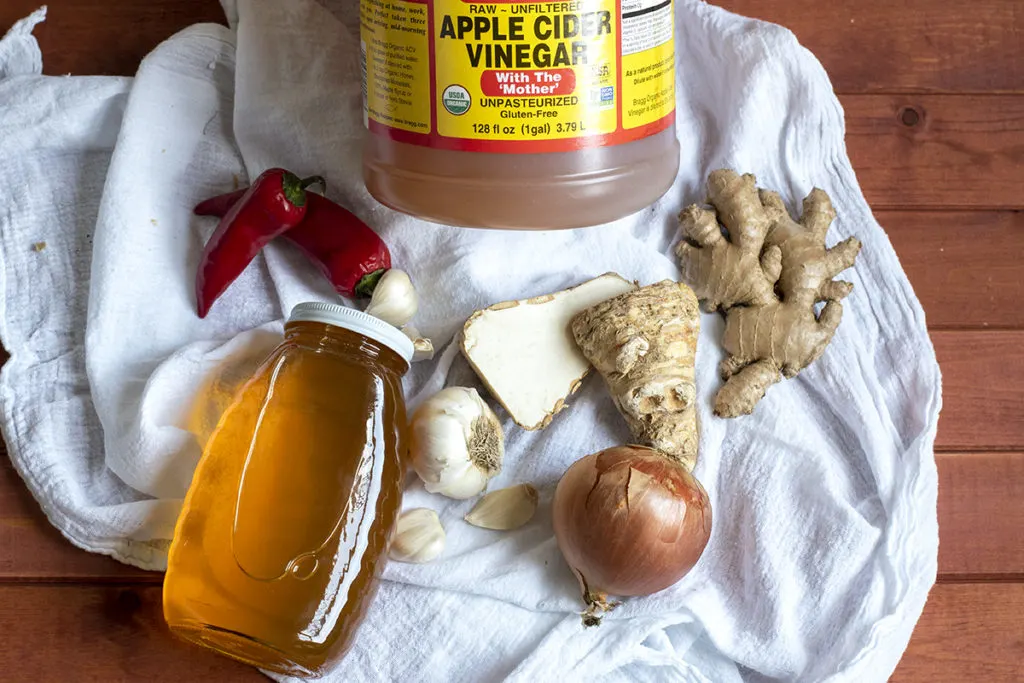
Rosemary’s original recipe requires only seven ingredients that nearly everyone has access to.
- Apple cider vinegar
- Onion
- Garlic
- Ginger
- Horseradish
- Hot peppers
- Honey
Yeah, you read that right.
Now do you believe me when I say it packs a punch?
Don’t worry, it tastes incredible. Sweet, tangy, bitey all finished off with a warming sensation. As the old saying goes, this stuff will cure what ails you.
Health Benefits of Fire Cider’s Ingredients
Apple Cider Vinegar
These days you can find plenty of anecdotal evidence on the internet for using apple cider vinegar to treat things like sunburn, acid reflux, or for regulating blood sugar, weight loss, leg cramps, fatigue, and the common cold.
Even the academic community has started to take notice, and several studies have been conducted studying apple cider vinegar. Such as this one that looks at ACV’s antiglycemic capabilities.
Be sure to use a good quality apple cider vinegar that has the mother. I recently discovered Fairchild’s Apple Cider Vinegar, and I really like their vinegar.
Onion & Garlic
Both onion and garlic are packed with vitamins. They’re both noted for their ability to lower cholesterol and blood pressure. Onions and garlic are potent antioxidants and have antibacterial properties.
Ginger
This is one of my favorite roots, and I always have some in the kitchen. One of the most significant benefits of ginger is its anti-inflammatory properties. As we continue to learn more about the connection between inflammation and disease, incorporating anti-inflammatory foods into our diets becomes more and more important.
Hot Peppers
The capsaicin in hot peppers has several healing benefits. It boosts your metabolism, satiates your appetite, lowers blood pressure, and aids in digestion. If you can get them, use fresh hot peppers instead of dried.
Horseradish
This root has long been a popular medicinal food. Its spicy heat is used to heal things like arthritis pain, colds, intestinal issues, and even UTIs. In some areas, whole horseradish root is hard to come by. You can use prepared horseradish from a jar just as easily.
Honey
Use raw and local honey. Using local honey can help control seasonal allergies. Raw honey is alive with microorganisms that will ferment in the fire cider turning it into a drink that supports gut health.
Now that you have your ingredients let’s make Rosemary Gladstar’s original recipe for fire cider together.
You’ll need a sharp knife; I can’t say enough good things about my Rhineland chef’s knife. It’s beautiful, well-weighted, and really holds an edge. Also, a cutting board and a clean quart jar with a lid will be needed. Put on some music and get chopping!
Depending on how spicy your pepper is, you may wish to wear gloves and be careful not to put your hands near your eyes.
You want everything chopped as finely as possible.
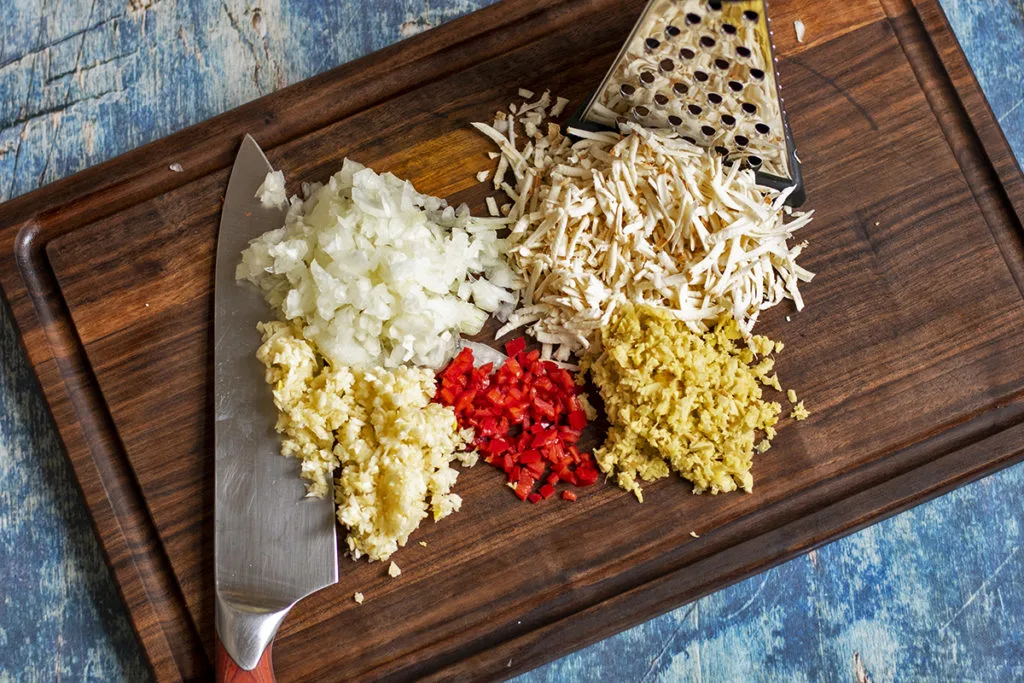
If you have a food processor, this is a great time to use it!
- ½ cup of grated horseradish root
- ½ cup of chopped onion
- ¼ cup of chopped garlic
- ¼ cup of chopped ginger
- 1 hot pepper finely chopped, if you have a high tolerance for spicy foods you can add the seeds
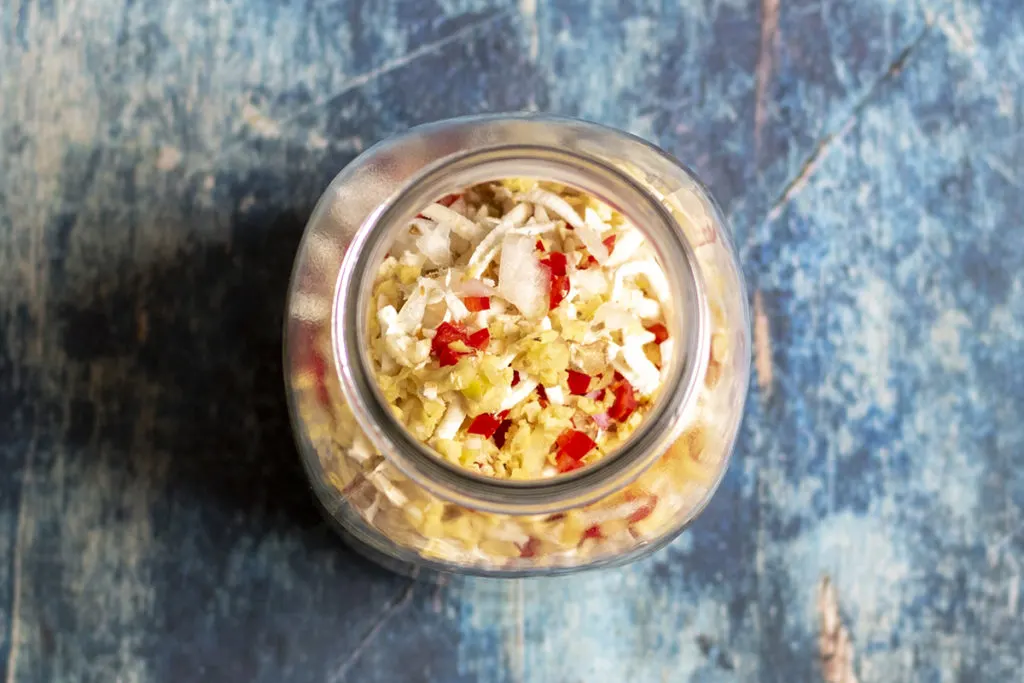
Add all of these ingredients to your jar, then pour enough apple cider vinegar in to cover everything plus another 3 or 4 inches. Put the lid on and give it a good shake.
You may wish to put a small square of parchment paper between the lid and the jar to protect the lid from the acid in the vinegary.
Loosen the cap a bit, and put the jar on your counter. You’ll need to re-tighten the lid and give it a good shake every other day or so.
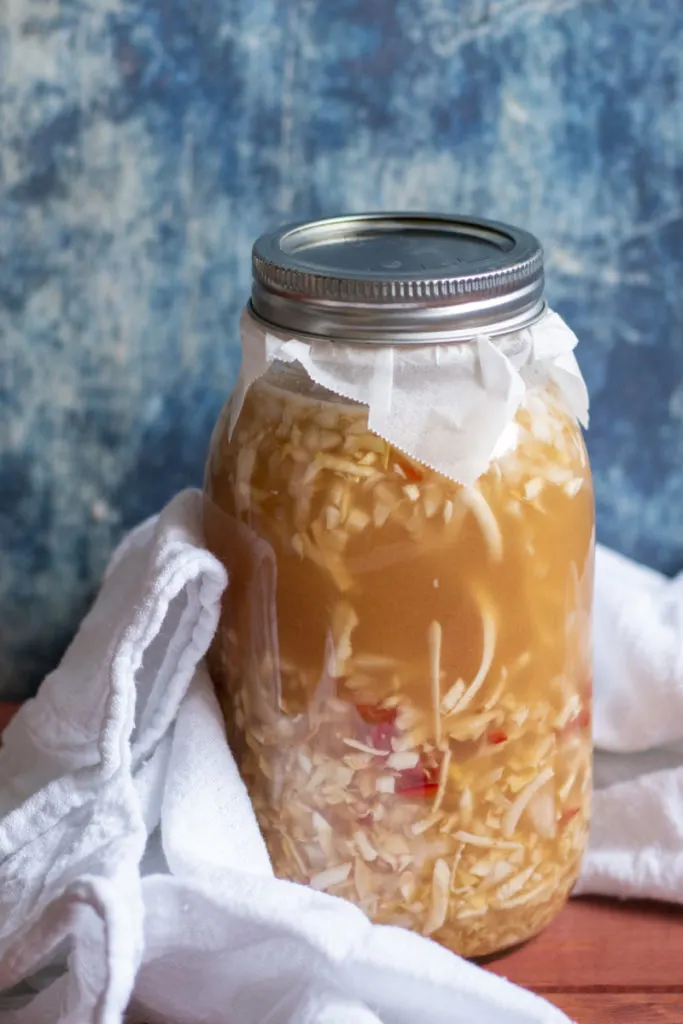
Let this concoction sit out on your counter for around 4-6 weeks. Then strain it through a fine-mesh sieve or cheesecloth into another jar. Stir in as much honey as you wish to achieve the desired sweetness.
Remember, though; it should be tangy and sweet with a little bite to it. No need to refrigerate, this can sit out on your counter as is.
If you’ve never tried fire cider before, I would suggest making the recipe as is at least once.
After that, go crazy!
If it’s good for you, chuck it in there!
Tinker with the ratios. Use what’s in season. Use what’s local. When I made the batch for this article, I threw in rosehips, pine needles, and turkey tail mushrooms after a foray in the woods.
Spicy Chai Fire Cider
- 1 whole orange, washed and thinly sliced into rounds
- ¼ cup peeled and chopped fresh turmeric
- 1 cinnamon stick
- 10 cloves
- 10 black peppercorns
- 4 or 5 cardamom pods
Follow the directions to age the fire cider, as noted above.
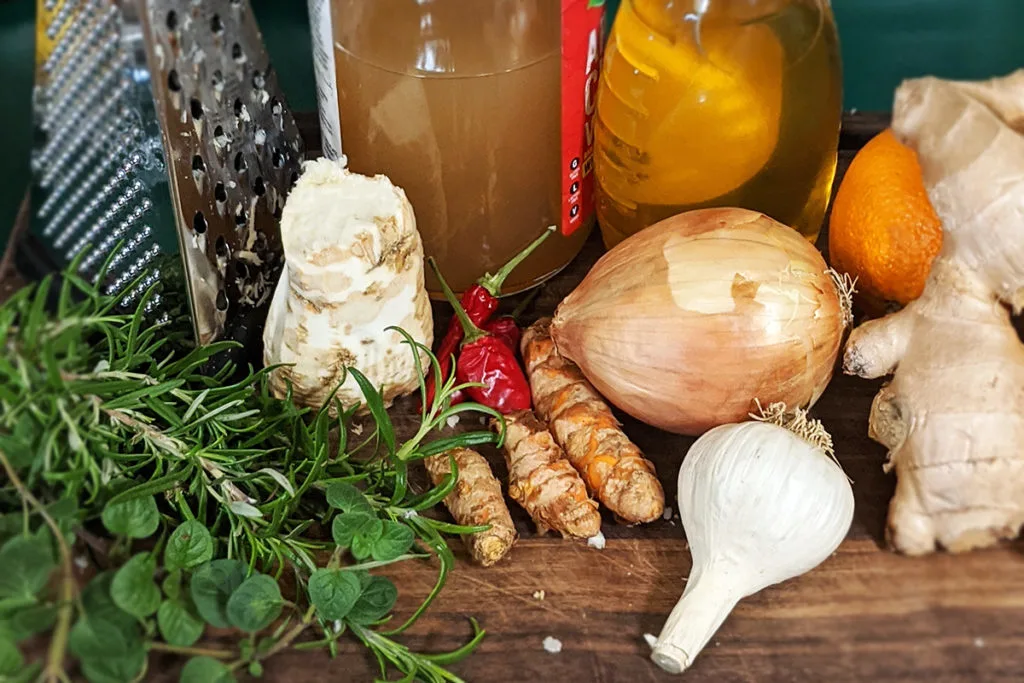
For even more fire cider variations as well as the history and uses of this excellent tonic, pick up Rosemary’s new book, “Fire Cider! 101 Zesty Recipes for Health-Boosting Remedies Made with Apple Cider Vinegar” I can’t recommend it enough.
How to Drink Fire Cider
The easiest way to drink it is just to shoot it. Using a jigger, pour yourself a 1 to 1 ½ oz shot and knock it back.
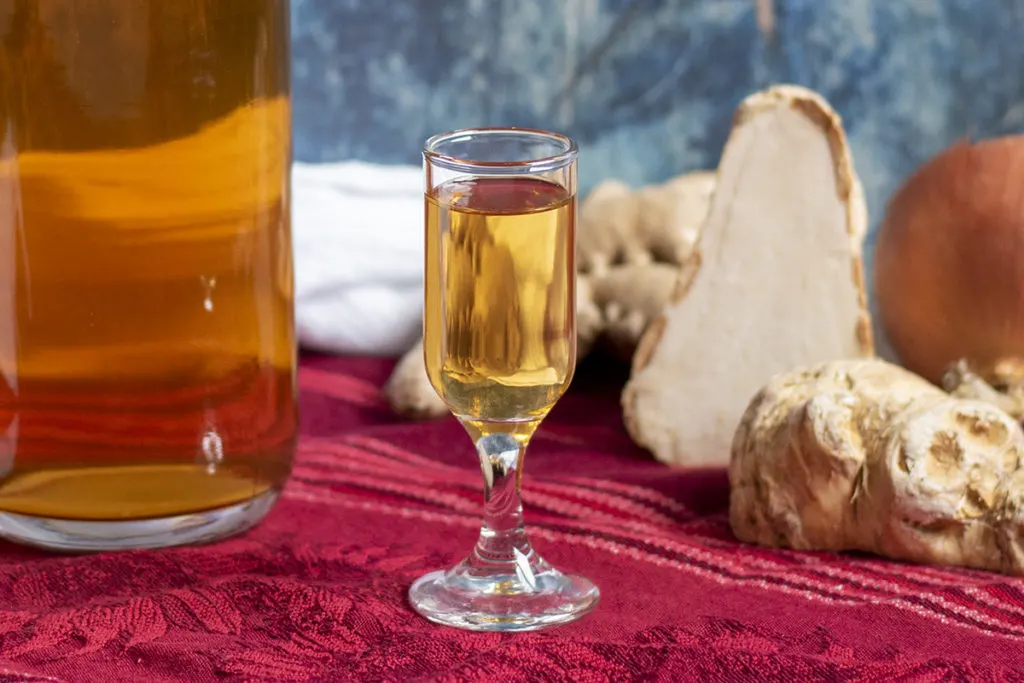
If you’re new to fire cider, you may want to start with a teaspoon and work up to an ounce, especially if you take it first thing in the morning on an empty stomach.
Let’s drink to your health.
Speaking of, fire cider is non-alcoholic, but it can make for a great cocktail mixer.

One of my favorite ways to drink fire cider is to pour a shot in a glass and top it off with club soda. I like having this after a big dinner. It helps to settle my stomach.
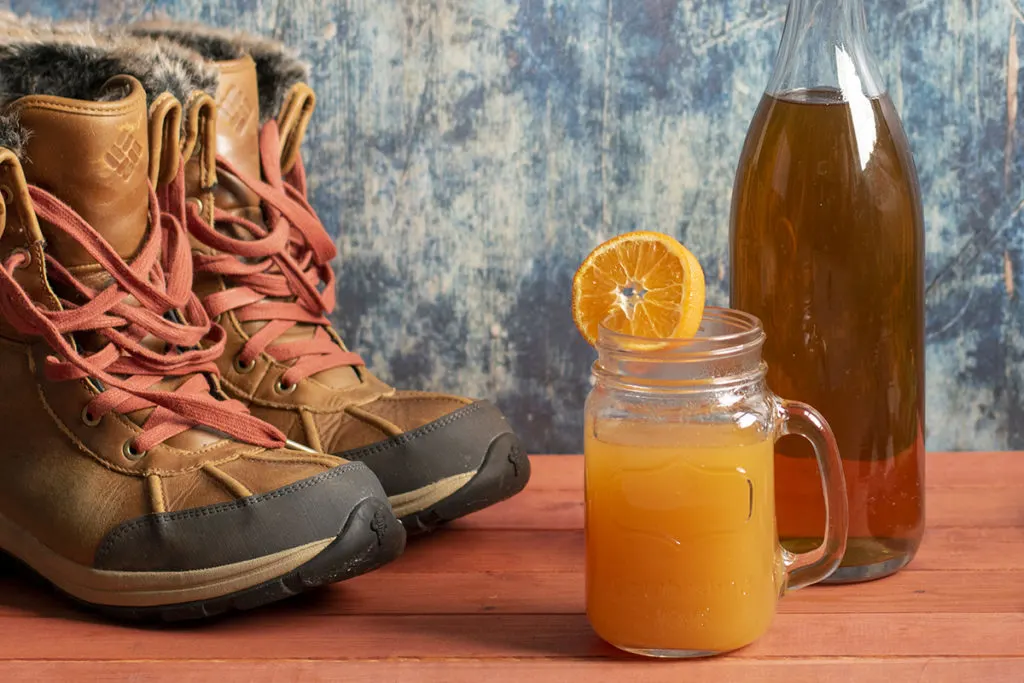
Pour an ounce or two in your hot cider and enjoy a well-deserved non-alcoholic pick me up. I can’t think of a quicker way to warm up after being out in the cold.
You don’t have to only drink fire cider either. It’s an excellent addition to salad dressings and soups. Use it when you’re stir-frying vegetables. Again, I can’t recommend Rosemary’s new book enough for some great recipes using fire cider.
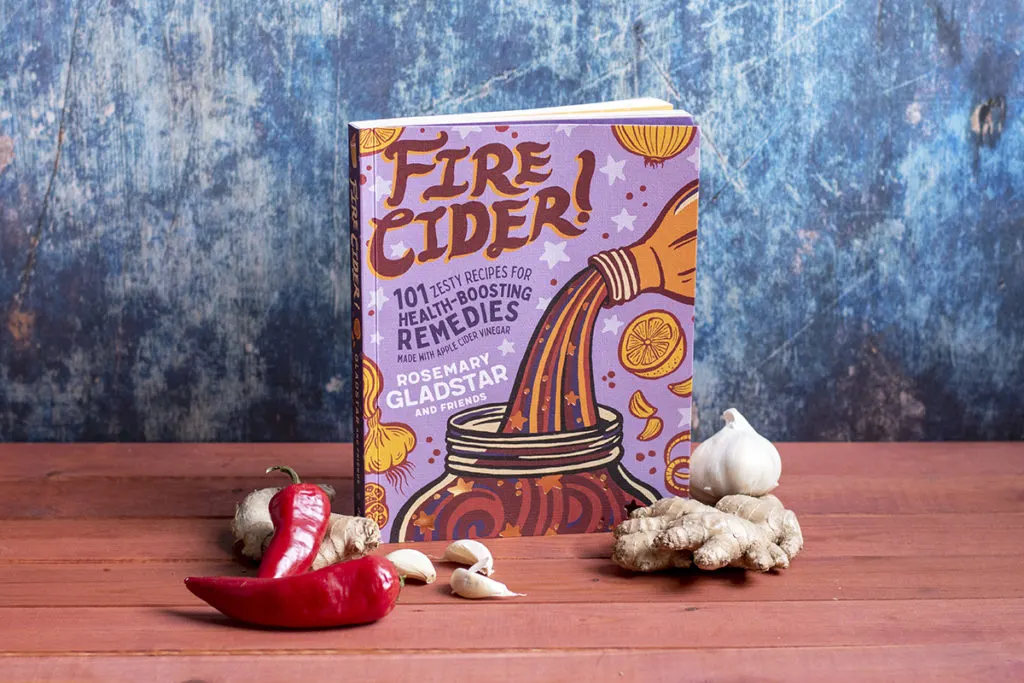
Try to drink fire cider daily during the colder months when the creeping crud is rampant.
If you feel you’re coming down with something, drink a shot every few hours. You’ll soon be on your feet again.
Share a batch with friends and family and teach them how easy it is to make as well. I can’t think of a better gift to give to those you love than the gift of good health.

Get the famous Rural Sprout newsletter delivered to your inbox.
Including Sunday musings from our editor, Tracey, as well as “What’s Up Wednesday” our roundup of what’s in season and new article updates and alerts.

